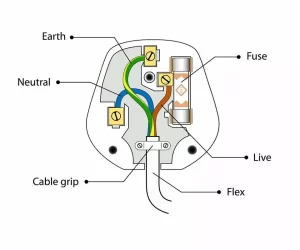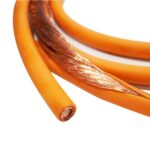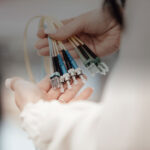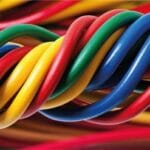Whether you're wiring a new power cord or repairing an old appliance, understanding the wire plug color code is essential for safe and proper electrical connections. These color codes help identify the purpose of each wire, reduce the risk of electrical shock, and ensure compliance with local safety standards.
In this guide, we’ll cover standard wire plug color codes for different regions (U.S., U.K., EU), their functions, and tips for working with plugs and cords safely.

wire plug color code
What Is a Wire Plug?
A wire plug (or power plug) connects an electrical device to a power source, typically through a cord. Inside the plug, multiple wires carry current (live), return current (neutral), or provide grounding for safety. Each of these wires is identified by a standard color code depending on the region.
Standard Wire Plug Color Codes by Region
🔌 United States (ANSI/NFPA 70 - NEC Standard)
| Wire Color | Function | Description |
|---|---|---|
| Black | Hot (Live) | Carries current from source |
| White | Neutral | Returns current to source |
| Green or Bare | Ground | Safety ground connection |
➡ Used in standard 120V or 240V residential plugs.
🔌 United Kingdom (BS 7671 Wiring Regulations)
| Wire Color | Function | Description |
|---|---|---|
| Brown | Live | Carries current from source |
| Blue | Neutral | Returns current to source |
| Green/Yellow | Earth (Ground) | Safety connection |
➡ Found in U.K. 3-pin plugs (BS 1363).
🔌 European Union (IEC Standard)
| Wire Color | Function | Description |
|---|---|---|
| Brown | Live (L) | Active conductor |
| Blue | Neutral (N) | Returns current |
| Green/Yellow | Earth (E) | Protective earth wire |
➡ Used in Schuko plugs and EU-compatible cables.
Color Code Summary Chart
| Region | Live (Hot) | Neutral | Ground (Earth) |
|---|---|---|---|
| U.S. | Black | White | Green or Bare |
| U.K. | Brown | Blue | Green/Yellow |
| EU | Brown | Blue | Green/Yellow |
Why Plug Wire Color Codes Matter
Understanding the wire plug color code is essential for:
✅ Safe installations: Prevents wiring live wires incorrectly.
✅ Device compatibility: Ensures proper voltage and grounding.
✅ Code compliance: Meets national and international electrical codes.
✅ Troubleshooting: Helps identify and fix issues quickly.
Tips for Wiring Plugs Safely
Always unplug before working on any wire.
Strip wires carefully—about 1/2 inch (12mm).
Secure each wire to its terminal: live to brass, neutral to silver, ground to green.
Use the correct cord type (e.g., SJT or HPN for household use).
Test with a multimeter before powering up.
⚠️ Important: Never guess wire colors—especially with imported or non-standard plugs. When in doubt, consult a professional or the product manual.
Conclusion
The wire plug color code serves as a critical guide for safely wiring and repairing electrical plugs in residential, commercial, or international settings. Knowing which wire goes where helps prevent shorts, shocks, or equipment damage.





